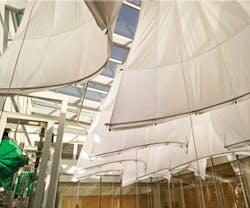Study: Green Federal Buildings Cheaper to Maintain
Sustainably designed federal buildings cost 19% less to maintain than comparable conventional buildings, according to a report by the Department of Energy’s Pacific Northwest National Laboratory (PNNL).
The General Services Administration (GSA) commissioned the laboratory to complete post-occupancy evaluations for 22 green federal buildings in seven of GSA’s administrative regions across the U.S. Researchers collected data from utility bills to determine energy and water use, O&M costs, and waste and recycling spending. They also conducted a survey on occupant satisfaction and commuting.
Compared to national averages for traditional commercial buildings, GSA’s green facilities:
- Cost 19% less to maintain
- Use 25% less energy and 11% less water
- Emit 34% less carbon dioxide
- Have 27% more satisfied occupants
“To measure green building performance, you must look at the building holistically, which includes occupant and maintenance impacts in addition to energy and water use,” says the paper’s lead author, Kim Fowler, senior research engineer and buildings relationship manager at PNNL.
“One can design and construct a building well with the greenest of specifications, but if it’s not operated well or isn’t meeting the needs of the occupants, the grandest intents go out the operable window.”
Among the buildings studied is the United States Courthouse in downtown Seattle, a 2004 winner of GSA’s award for construction excellence. The courthouse’s sustainable features include radiant floor heating, high efficiency lighting, an energy management system, a natural gas boiler, and waterless urinals. Its state-of-the-art design resulted in slightly higher janitorial costs, but these were more than justified by operating costs that were 35% lower than the industry baseline.
